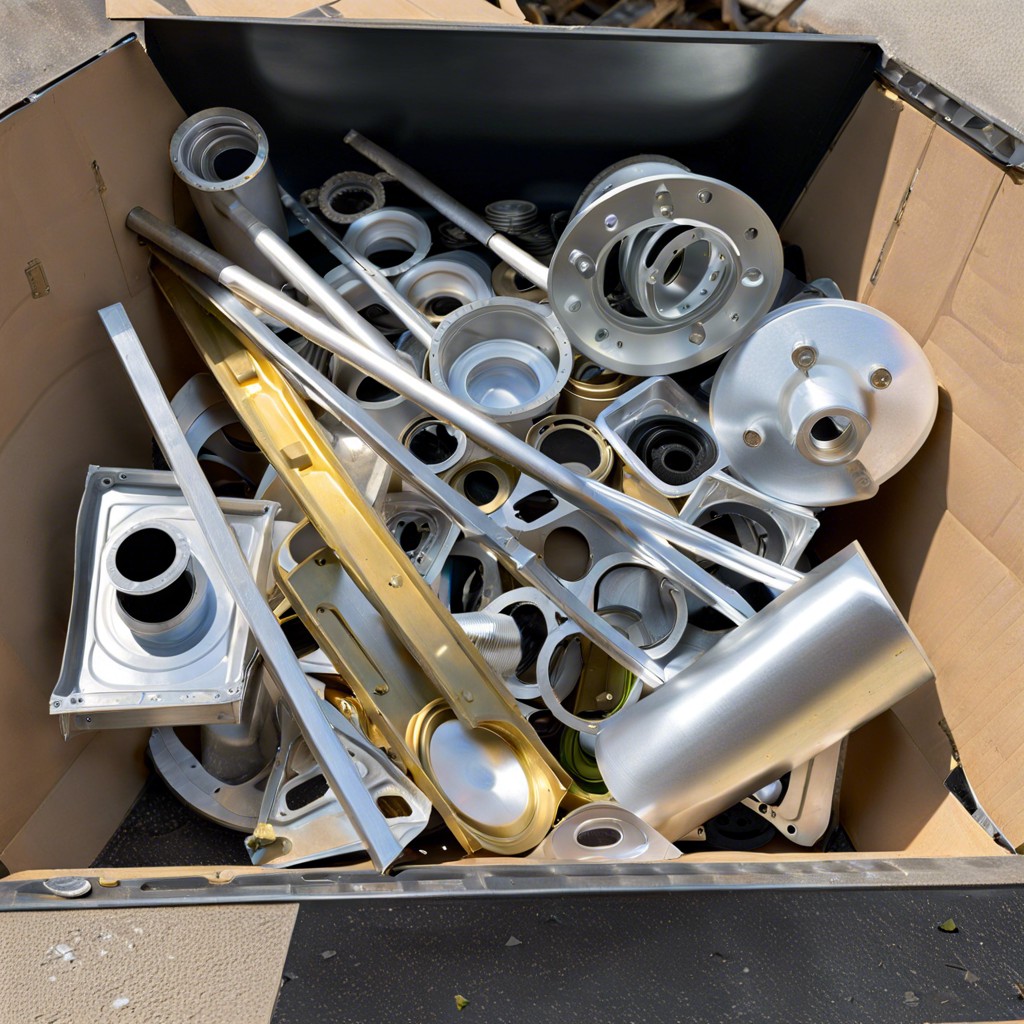Discover the effective steps to eliminate condensation between window panes and restore your clear view by following our comprehensive guide.
Have you ever noticed fog or condensation forming between your window panes? It’s not only unsightly, but it can also be a sign of a bigger problem. Condensation between window panes is a common issue that many homeowners face, and it can be caused by various factors such as poor installation, seal failure, or even extreme temperature changes.
If left unaddressed, it can lead to mold growth and damage to your windows. But don’t worry! In this blog post, we’ll guide you through the steps on how to fix condensation between window panes and prevent it from happening again in the future.
So grab a cup of coffee and let’s get started!
Key takeaways:
- Signs of condensation: fog, water droplets, mold growth, musty smell.
- Causes: seal failure, poor installation, temperature changes.
- Insulated glass prevents condensation.
- Assess severity: fog on one pane, duration of condensation.
- Temporary fixes: wipe away moisture, use a hairdryer/heat gun.
Signs of Window Condensation
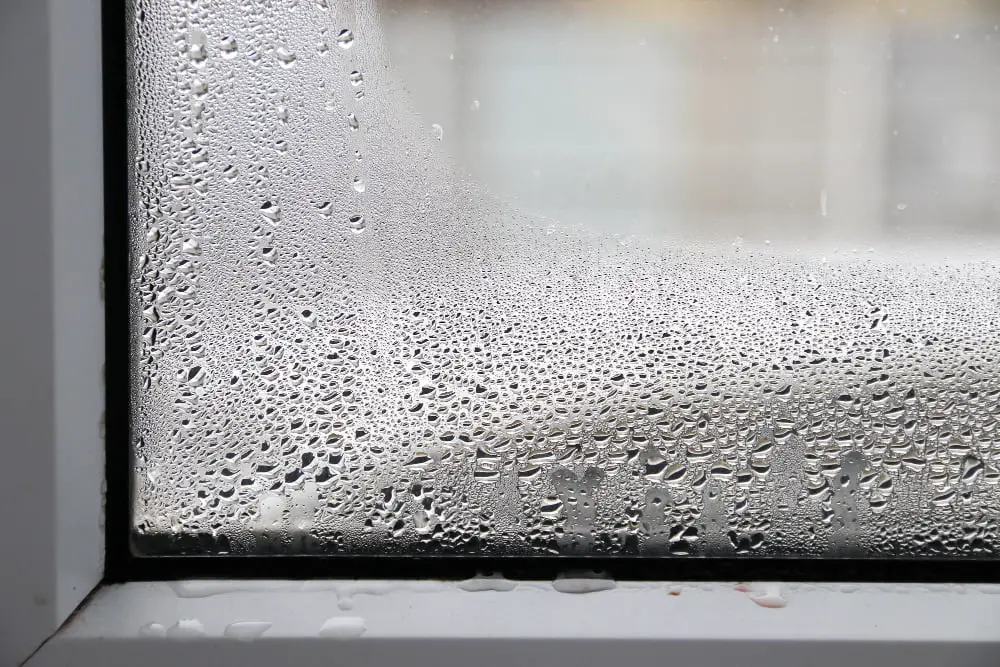
One of the most common signs is fog or moisture buildup on the inside surface of your windows. This can occur during cold weather when warm indoor air meets a cold window surface.
Another sign to look out for is water droplets forming on the glass or sills, especially in areas with high humidity levels such as bathrooms and kitchens. If you notice mold growth around your windows or a musty smell in your home, it could be an indication that condensation has been present for some time.
It’s important to address these signs promptly before they lead to more significant issues like rotting frames and damaged walls.
Causes of Condensation Between Window Panes
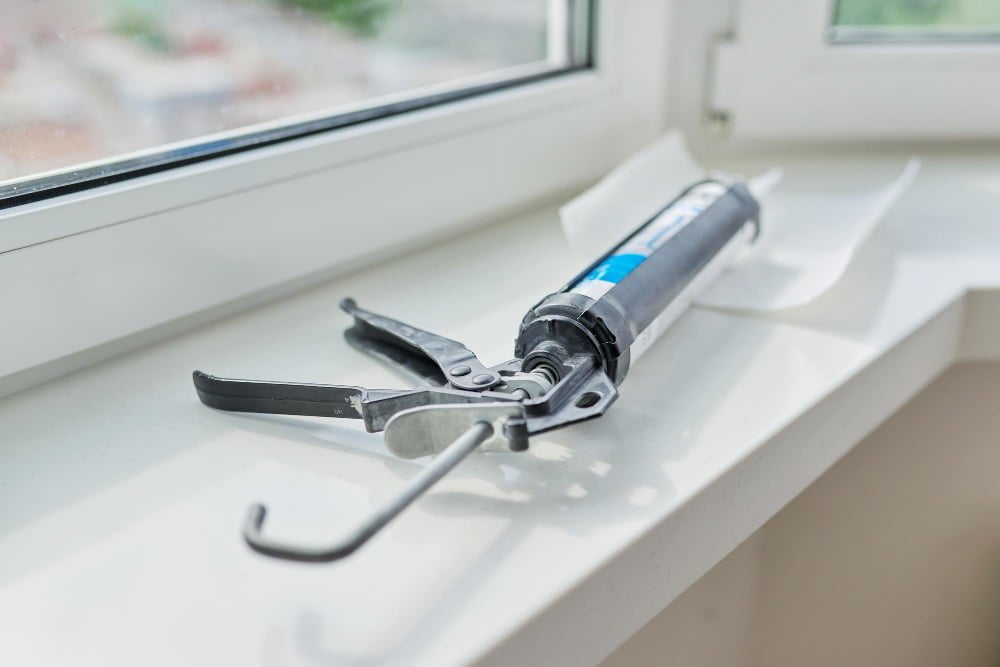
One of the most common causes is seal failure, which occurs when the sealant around the edge of your window breaks down over time, allowing moisture to seep in and accumulate between the panes. Another cause could be poor installation or manufacturing defects that allow air to enter into space between glass panels.
Extreme temperature changes can also lead to condensation forming on windows. For instance, during winter months when it’s cold outside and warm inside your home, moisture from indoor air may condense on colder surfaces such as windows causing foggy appearance.
It’s important to identify what’s causing this issue so you can take appropriate measures for fixing it before any further damage occurs.
The Role of Insulated Glass in Preventing Condensation

IGUs are made up of two or more panes of glass separated by a spacer and sealed around the edges to create an air-tight unit. The space between the panes is filled with either air or gas, such as argon, which acts as insulation.
The insulated design helps prevent heat transfer from inside your home to outside during winter months and vice versa during summer months. This means that there is less chance for temperature differences that can cause condensation on windows.
Some IGUs come with low-emissivity coatings (Low-E), which further reduce heat transfer while allowing natural light into your home. These coatings also help block harmful UV rays that can fade furniture and carpets over time.
Assessing the Severity

Not all cases require immediate attention, and some can be fixed with simple DIY solutions. However, if left unaddressed for too long or if there is significant damage to your windows’ seals or frames, it may be time to consider replacing them entirely.
One way to determine how severe your condensation issue is by checking whether it appears on one window pane or multiple ones. If only one pane has fogged up while others remain clear, then this could indicate a broken seal that needs repair.
Another factor that determines severity is how long you’ve noticed condensation forming between your window panes. If this has been happening for an extended period and hasn’t gone away despite trying temporary fixes like wiping away moisture with towels or using a hairdryer/heat gun method – then professional help might be necessary.
How to Identify Broken IGU Seals
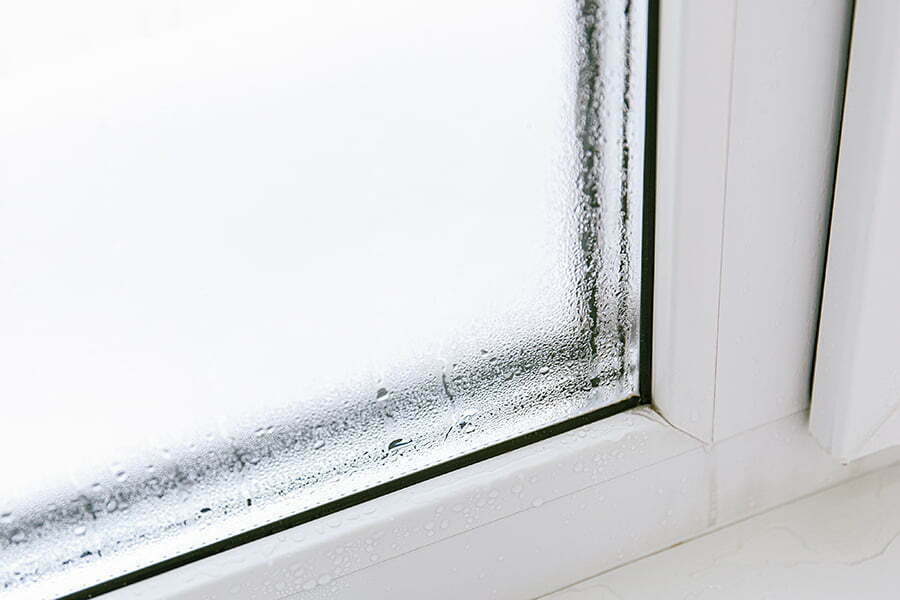
Insulated glass units (IGUs) are made up of two or more panes of glass separated by a spacer and sealed together to create an insulating barrier. When the seal fails, moisture can enter the space between the panes and cause condensation.
To identify if your IGU seals are broken, look for signs such as foggy windows that don’t clear up even after wiping them down or water droplets forming on the inside surface of your windows. You may also notice white mineral deposits on the glass caused by evaporated water from within.
Another way to check is to tap gently around each pane with a blunt object like a screwdriver handle while listening for any rattling sounds which indicate that there’s no vacuum in-between. If you suspect that one or more seals have failed, it’s best to consult with professionals who can assess whether repair is possible or replacement is necessary.
Preventative Measures

Here are some preventative measures that you can take to avoid this issue in the first place:.
1. Reduce Humidity: High humidity levels inside your home can cause condensation on windows, especially during colder months.
Use a dehumidifier or exhaust fans in bathrooms and kitchens to reduce moisture.
2. Increase Air Circulation: Proper ventilation helps circulate air and prevent stagnant pockets of humid air from forming around windows.
3. Adjust Your Thermostat: Keep your thermostat at a consistent temperature throughout the day, as fluctuating temperatures can cause condensation buildup on windows.
4. Open Windows Regularly: Opening your windows for even just 10-15 minutes each day allows fresh air to circulate through your home and reduces humidity levels indoors.
Reducing Interior and Exterior Window Condensation

One of the most effective methods is to increase air circulation inside your home. This can be achieved by opening windows or using fans to circulate air throughout the house.
Another way to reduce interior condensation is by using dehumidifiers. These devices remove excess moisture from the air, which helps prevent water droplets from forming on your windows.
Adjusting your thermostat can also help prevent interior window condensation. Lowering the temperature in rooms with high humidity levels will decrease moisture in the air, reducing condensation on windows.
For exterior window condensation, increasing ventilation around your home’s perimeter may help alleviate this issue. Trimming back trees or bushes that block airflow near windows could improve ventilation and minimize outdoor humidity levels.
Opening Windows to Circulate Air

This allows for proper air circulation, which helps to regulate temperature and humidity levels in your home. When you open your windows, fresh air enters while stale or humid air exits, creating a natural flow that can help prevent moisture buildup on your windows.
It’s important to note that opening just one window may not be enough; you need cross-ventilation for optimal results. So try opening multiple windows throughout the house at different times of day and night.
It’s essential to keep an eye on outdoor weather conditions before deciding when and how long to open up those windows. If it’s raining outside or if there are high humidity levels outdoors (which often happens during summer months), then keeping them closed might be best as this could lead more moisture into the house than out.
Increasing Air Circulation Inside the House

Proper ventilation can help regulate humidity levels and prevent moisture buildup, which in turn reduces the likelihood of condensation forming on your windows.
To increase air circulation, you can open doors and windows to allow fresh air into your home. This will not only improve indoor air quality but also help remove excess moisture from the environment.
You may also consider using exhaust fans in areas where there’s high humidity such as bathrooms or kitchens.
Another way to promote airflow is by using ceiling fans or portable fans strategically placed around your house. These devices circulate cool and dry air throughout a room, reducing stagnant pockets that could lead to mold growth or other issues related to poor indoor ventilation.
Using Dehumidifiers to Reduce Humidity

A dehumidifier works by removing excess moisture from the air, which can help prevent condensation from forming on your windows. It’s especially useful during humid summer months or in areas with high humidity levels.
When choosing a dehumidifier, consider factors such as room size and capacity, noise level, and energy efficiency. Place it near the affected window area for maximum effectiveness.
While using a dehumidifier can be helpful in reducing interior window condensation caused by high humidity levels inside your home, it may not solve all issues related to exterior temperature changes or broken seals between panes of glass.
Adjusting Your Thermostat to Prevent Condensation

When it’s cold outside, and you have your heat on high inside, the warm air can cause moisture buildup on windows. This happens because warm air holds more moisture than cold air.
To prevent this from happening, try lowering your thermostat a few degrees or using a programmable one that adjusts automatically based on outdoor temperatures. By doing so, you’ll reduce the temperature difference between indoor and outdoor environments while still keeping your home comfortable.
Make sure that all rooms in your house are heated evenly as uneven heating can lead to temperature differences causing condensation build-up in certain areas of the house.
Temporary Fixes

These solutions may not be permanent, but they can provide a quick fix until you’re able to replace or repair your windows.
One option is to remove any accumulated moisture from between the panes. You can do this by wiping away any visible condensation with a dry cloth or towel.
Another method involves using a hairdryer or heat gun on low heat settings and directing it towards the affected area for several minutes until all moisture has evaporated.
Another popular solution is soaking towels in vinegar overnight and placing them on your windowsill where they will absorb excess humidity in your home. This method works well for mild cases of interior window condensation but should not be relied upon as a long-term solution.
It’s important to note that while these methods may temporarily solve your issue, they won’t prevent future occurrences of window pane condensation entirely.
Removing Condensation From Between Window Panes

While there are temporary fixes that can help reduce the appearance of fog or condensation, they won’t solve the underlying problem. The only way to eliminate condensation between window panes is by removing it completely.
One method for removing moisture from between window panes involves using a hairdryer or heat gun on low settings. Hold your tool about six inches away from your windows and move slowly across them until all visible signs of water droplets have disappeared.
Another popular technique involves placing an overnight vinegar-soaked towel over affected areas and leaving it in place for several hours before wiping away any remaining residue with a clean cloth.
While these methods may work temporarily, they don’t address the root cause of why you’re experiencing this issue in the first place.
Wiping Away Accumulated Moisture

To do this, start by cleaning the exterior of your windows with a mild detergent solution and then dry them thoroughly. Next, use a clean cloth or paper towel to wipe away any visible moisture on both sides of the interior glass pane.
It’s important to note that wiping away accumulated moisture is only a temporary solution as it does not address the root cause of condensation between window panes. If left unaddressed for too long, it can lead to mold growth and damage to your windows.
To prevent future occurrences of condensation between window panes, consider implementing preventative measures such as increasing air circulation inside your home or using dehumidifiers to reduce humidity levels in areas prone to excess moisture buildup.
Using Hair Dryer or Heat Gun to Remove Condensation
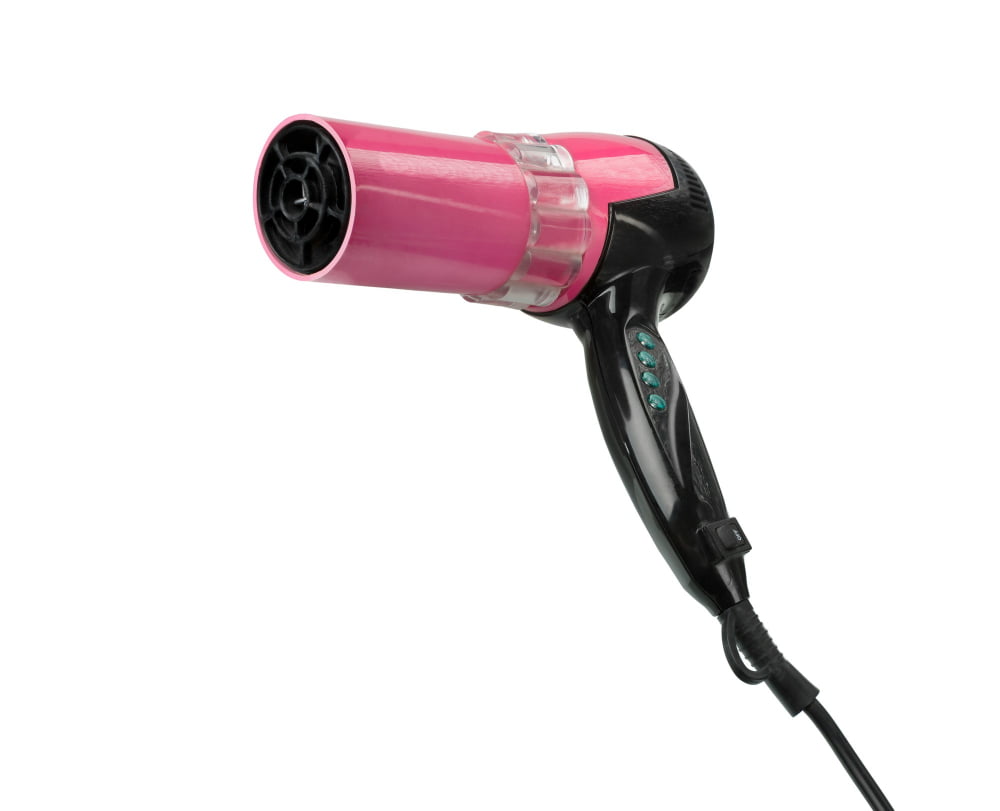
However, it’s important to note that this method is only temporary and may not fix the underlying issue causing the condensation.
To use this method, simply turn on your hair dryer or heat gun and direct it towards the affected area of your window. The hot air will cause the moisture to evaporate from between the panes of glass.
Be sure to keep moving around so as not to overheat any one spot.
While this technique can provide immediate relief from foggy windows, it’s essential that you address any underlying issues with your windows’ seals or insulation if you want long-term results.
Overnight Vinegar Soaked Towel Method

This method involves soaking a towel in white vinegar and placing it on the affected area overnight. The acidity of the vinegar helps break down any mineral deposits or dirt that may have accumulated between your window panes, making it easier to wipe away.
To use this method, start by cleaning your windows thoroughly with soap and water. Then soak a clean towel in white vinegar until it’s fully saturated but not dripping wet.
Place the damp cloth over the affected area of your windowpane before going to bed at night.
In the morning, remove the cloth from your windowpane and wipe away any remaining moisture with another dry cloth or paper towels. If there is still some residue left behind after wiping off all visible moisture spots using this technique then repeat as necessary until all signs are gone.
Window Replacement Options

Window replacement options include restoring or replacing the entire window unit. Restoring involves removing and resealing the glass panes while keeping the original frame intact.
This option is more cost-effective than a full replacement but may not be suitable for severely damaged frames.
On the other hand, a full window replacement involves removing both frame and glass pane units entirely before installing new ones that are energy-efficient with improved insulation properties to prevent future condensation issues.
When deciding between restoration or complete replacements of windows affected by condensation problems, it’s essential to weigh up factors such as cost-effectiveness versus long-term benefits like energy efficiency gains in reducing heating bills over time.
Deciding Between Restoring or Replacing Windows

The decision to restore or replace depends on several factors such as the age of your windows, their condition, and how much you’re willing to spend.
Restoring involves removing the affected glass unit from its frame and replacing it with a new one while keeping the existing frame intact. This option is less expensive than full replacement but can only be done if there’s no damage to other parts of the window.
On the other hand, full replacement means removing both sashes along with any damaged frames before installing new ones. This option is more costly than restoration but offers better energy efficiency benefits in addition to fixing condensation issues.
Ultimately deciding whether restoration or replacement is best for you will depend on various factors like budget constraints and personal preferences.
Professional Help for Condensation
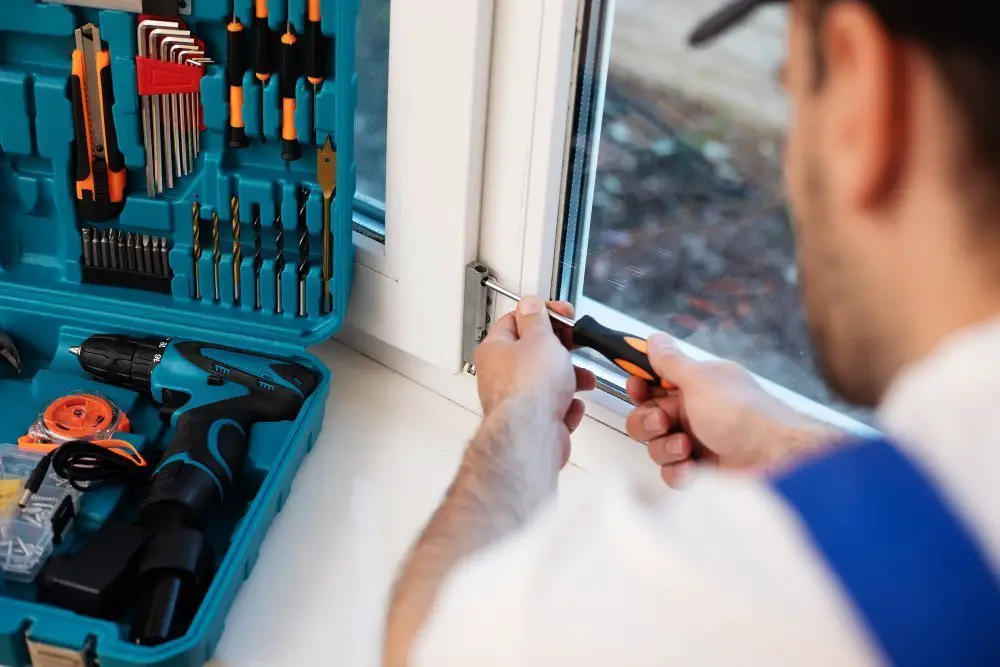
A glass cleaner or window repair specialist will have the necessary tools and expertise to assess the severity of your situation and recommend appropriate solutions.
Professional help is especially important if you notice any cracks or chips on your windows, as these can lead to more significant problems down the line. If you have older windows that are no longer energy-efficient, replacing them with newer models could save you money on heating bills while also preventing future condensation issues.
When choosing a professional for help with condensation between window panes, make sure they are licensed and insured. You should also ask for references from previous clients before hiring them.
While there are many DIY methods available for fixing condensation between window panes at home; sometimes calling in a professional is necessary.
Consult a Professional Glass Cleaner for Persistent Issues

A professional can assess the severity of the issue and determine if there are any underlying problems that need to be addressed. They have specialized tools and equipment that can help remove moisture from between window panes without damaging them.
A professional glass cleaner can provide recommendations on how to prevent future condensation issues. This could include upgrading your windows or improving ventilation in your home.
It’s important not to ignore persistent condensation issues as they could lead to more significant problems down the line. Consulting with a professional is an investment in maintaining healthy windows for years to come while also ensuring energy efficiency benefits for your home.
Energy Efficiency Benefits

When there is moisture buildup between the glass panes, it means that the seal has failed and air is leaking in and out of your windows. This can cause a significant loss of heat during winter months or cool air during summer months, leading to higher energy bills.
By fixing condensation issues promptly, you can prevent further damage to your windows and improve their insulation properties. Replacing damaged seals or upgrading to insulated glass units (IGUs) will help keep warm air inside during winter while keeping hot air outside in summer.
In addition to saving money on utility bills, improving energy efficiency also reduces carbon emissions from power plants that generate electricity for heating and cooling homes.
Maintenance Tips
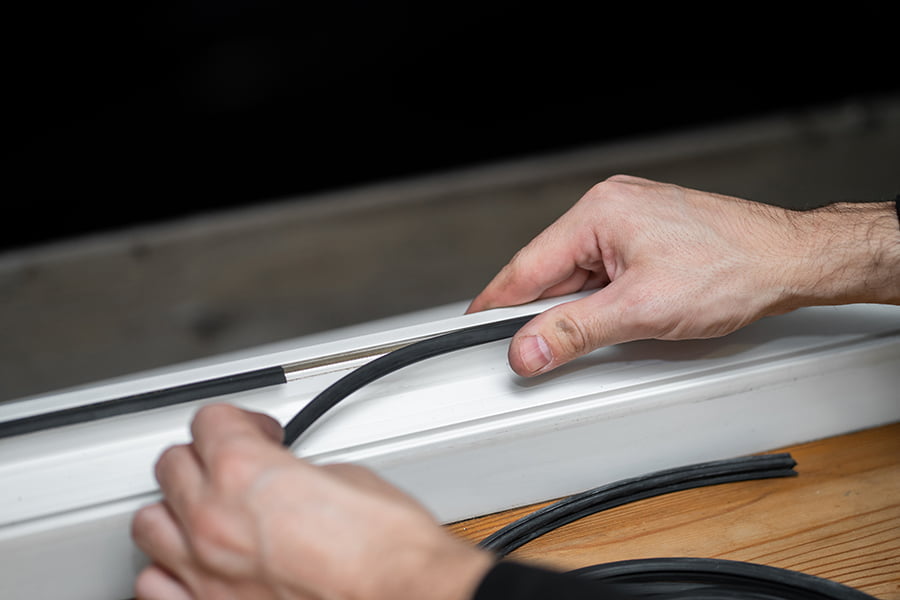
It requires regular maintenance to ensure that your windows remain in good condition and continue to function properly. Here are some tips for maintaining your windows and preventing future condensation issues:
1. Regularly inspect the seals around your windows: Check for any cracks or gaps in the sealant, which can allow moisture to seep into the space between window panes.
2. Keep an eye on humidity levels: High humidity levels can contribute significantly to condensation problems, so it’s essential to keep them under control by using dehumidifiers or air conditioning units.
3. Clean your windows regularly: Dirt and debris buildup on glass surfaces can trap moisture, leading to increased chances of condensation forming between window panes.
4. Avoid placing furniture near windows: Furniture placed too close may block airflow around the room, trapping humid air against cold glass surfaces causing more significant amounts of interior window pane fogging.
FAQ
How do you get rid of condensation between double pane windows?
To get rid of condensation between double pane windows, use silica desiccant pellets inside the aluminum perimeter strip to absorb moisture from incoming air in the space between the panes.
Can condensation between windows be fixed?
Condensation between windows cannot be fixed easily, as it takes time to dissipate and may lead to mold growth, causing indoor allergy symptoms.
Can you fix foggy double pane windows?
No, I cannot fix foggy double pane windows, but you can repair them by drilling holes on the outside pane, expelling moisture, and attaching a plastic tube using caulk or glue.
What causes condensation between two window panes?
Condensation between two window panes occurs when warm, moist indoor air collides with the cool surfaces of the glass.
What are the most effective methods for preventing condensation in double pane windows?
The most effective methods for preventing condensation in double pane windows include ensuring proper window installation, maintaining low indoor humidity, and improving insulation.
How can you determine if a double pane window requires repair or replacement due to condensation issues?
To determine if a double pane window requires repair or replacement due to condensation issues, inspect the window for moisture or fogging between the panes, which indicates seal failure.
Is it possible to DIY the repair of foggy double pane windows, and what tools and materials are needed?
Yes, it is possible to DIY repair foggy double-pane windows using tools and materials such as a drill, sealant, and rubber tubing.
Recap

